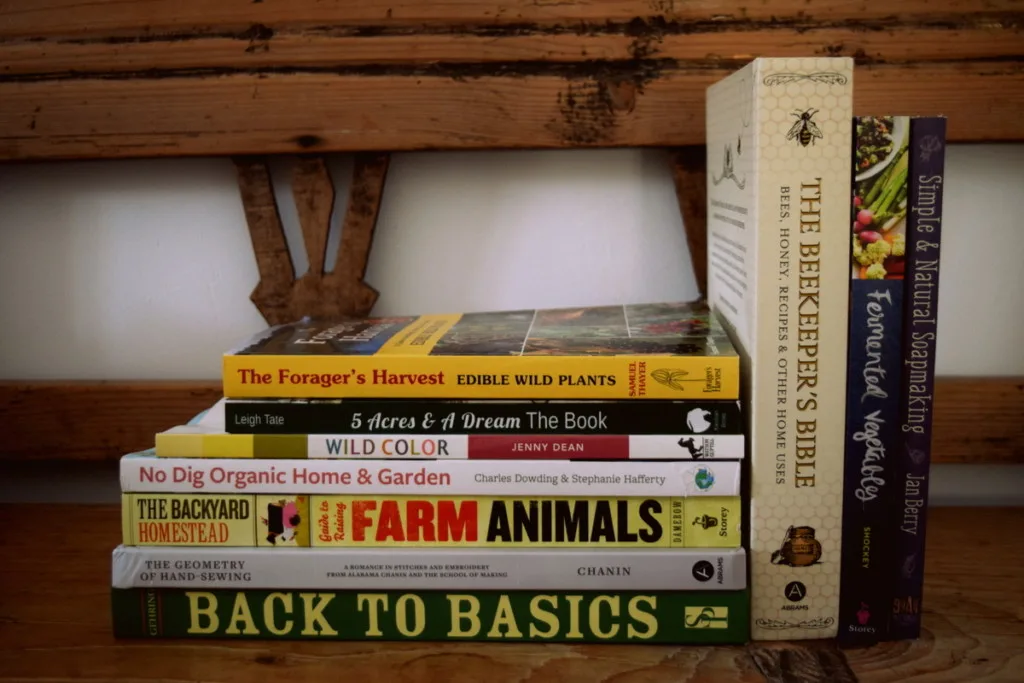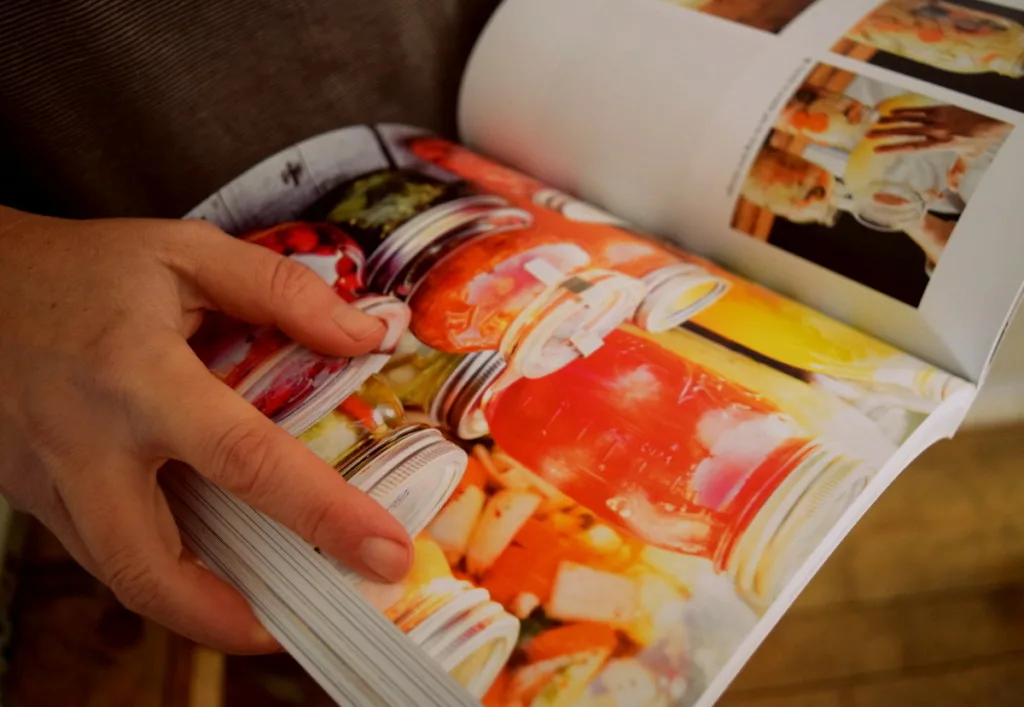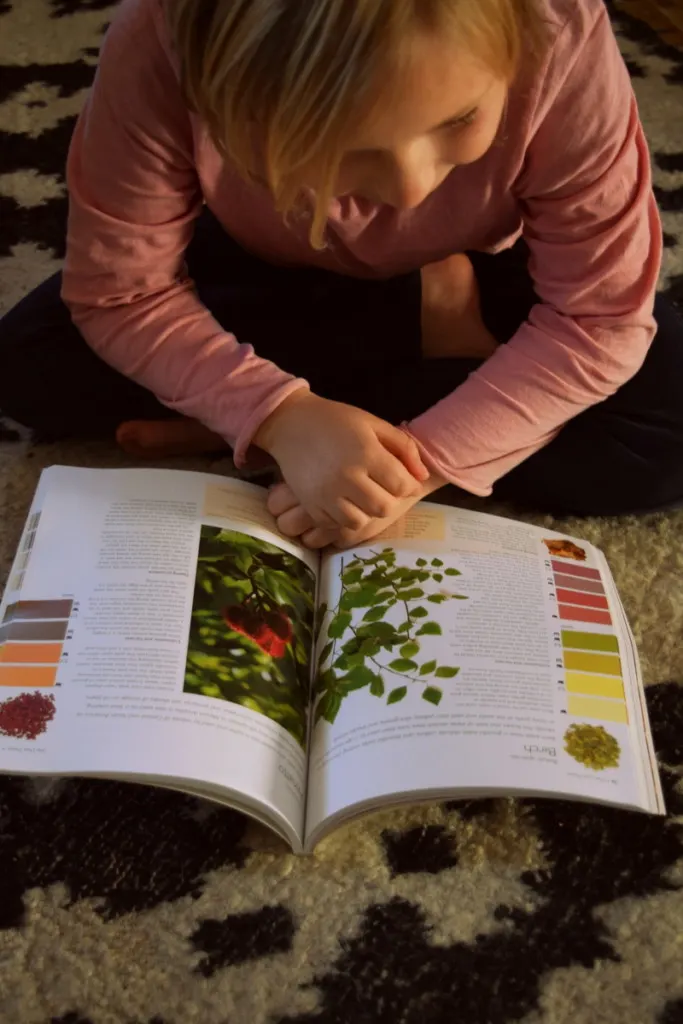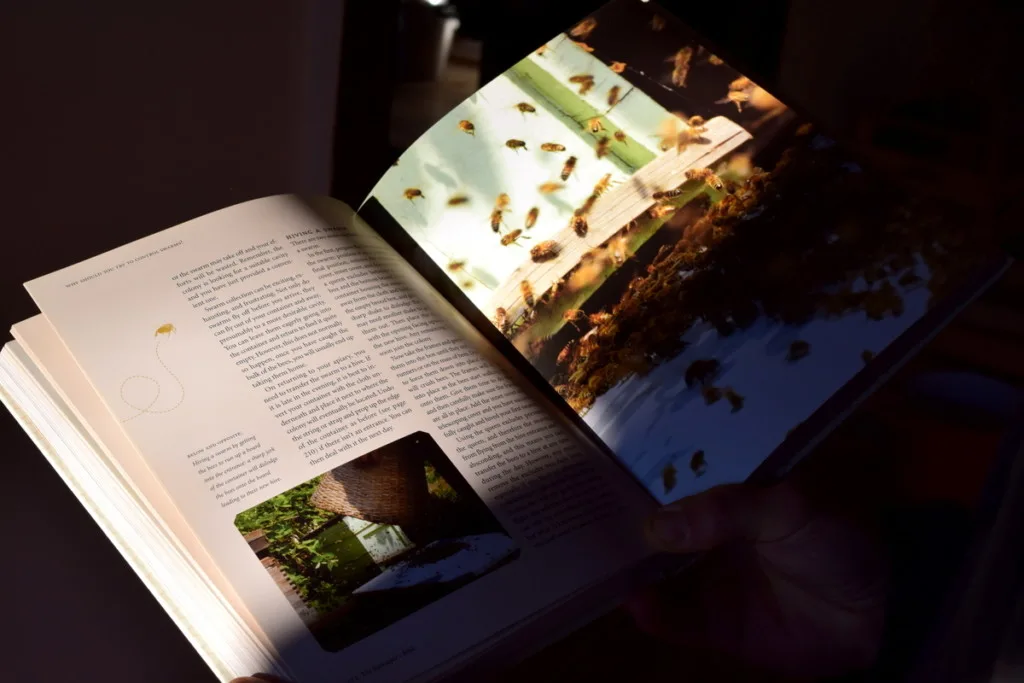
Knowledge is power. And if your aim in life is to be a self-reliant gardener and/or homesteader, there are plenty of essential skills to learn!
The homesteading experience often starts with growing a small garden full of tomatoes, peppers and herbs. In ways that are unknown, this inevitably leads to raising chickens for eggs.
At some point, fresh milk is a must, so is creating compost, making natural soaps, planting an orchard, curing bacon and preserving your harvest through dehydrating and canning.
You can read all about these subjects online, here on Rural Sprout, and in hundreds of other sites dedicated to living a simple, natural life. Though sometimes you need to dig deeper.
One way to gain homesteading and gardening experience is to jump right in and do it. Plant the corn, the lettuce, the peas and see what happens, and learn from your mistakes. Of course, you can attend live workshops (depending on your location) to learn from others firsthand.
However, if you live in a rural setting, as we do in northern Romania, books may just be your best source of knowledge to bridge some “gaps”.
The beginning of a new year is a wonderful time to develop your interests and become better at everything you do!
Here are my top 10 books to get you through a year of homesteading:

1. Back to Basics – A Complete Guide to Traditional Skills
If you are seeking old-time basic skills, this is the book for you!
In it you will find chapters on:
- building a home from old and new materials
- erecting fences for livestock
- heating with wood
- using alternative energies
- gardening basics, planting and caring for an orchard
- canning and preserving your harvest
- raising animals from pigs to chickens
- handicrafts such as spinning, dyeing and weaving
- sewing mocassins
- woodworking with hand tools
- metalworking
- soapmaking
- basketry
- camping and hiking
And the list goes on!
Even though this book is more then 500 pages, you can’t expect it to be in-depth, however it will stimulate your mind with ideas and crafts that you could be doing, even now, in more modern times.
Let it be the basis for all that you are interested in, then move onto a more specific, focused book to study further. Kids of any age will love to flip through the pages as they dream about what to do next!
Perhaps you’d like to make a simple broom from a birch sapling? You’ll find directions on how to make one in the book.
Simple instructions to make a table and chairs, tan a hide and or learn to make your own cheese from raw milk…
You’ll find it all here:
Back to Basics: A Complete Guide to Traditional Skills edited by Abigail R. Gehring
2. Simple and Natural Soapmaking
Making soap is one skill that I have yet to master, and I am counting on this book to help.
Soapmaking is both an art and a science. And I am always so impressed by those soapmakers who proclaim that it is simple – at the very least they make it look easy.
Melt and pour soap recipes are for everyone, but layered soaps with Cambrian blue clay, madder root or fresh plantain leaves? These take both talent and knowledge that this book contains.
If you have allergies to fragrances or certain ingredients often included in soaps, you’ll find a wealth of knowledge here, from someone who discovered soapmaking for these very reasons.
In the book you will discover:
- how to safely handle lye
- what tools and ingredients you need to make natural soaps
- cold process soapmaking directions
- how to cut, cure and store handmade soaps
- a photo gallery of natural soap colorants
- how to decorate soaps with layers, stripes and swirls
Plus there are so many soap recipes to try, it is hard to pick just one!
3. Fermented Vegetables – Creative Recipes for Fermenting 64 Vegetables & Herbs
Once you learn the basics of making sauerkraut, there is a whole other world of amazingly delicious chutneys, relishes, kimchis and brined pickles to explore.
By fermenting, you’ll unlock new, unimagined, complex, deep flavors. You’ll experience the unique flavor that comes from time and place with each delicious batch.
– Kristen K. Shockey & Christopher Shockey, Fermented Vegetables
With a garden full of veggies, or with a farmers market, CSA or green grocer nearby, there will never be a shortage of vegetables.

As most vegetables have a short shelf-life, you will want to find a way other than dehydrating or canning to preserve them for longer. Fermentation does exactly that. It also provides you with plenty of nutrient-rich probiotics that you simply cannot buy from the store.
In this wonderfully curated book, you will discover ways of fermenting just about any crop that comes out of your garden:
- arugula
- asparagus
- basil
- beets
- carrots
- celeriac
- cucumbers
- fennel
- garlic
- onions
- parsley
- peppers
- radishes
- rhubarb
- sweet potatoes
- tomatoes
- turnips
- winter and summer squash
Of course, there is much more to the list, but this is a great starting point to think about all the possibilities of what can be fermented. Then you start thinking about how. How hard is it to ferment? How will I know when it is ready to eat? How do I make an appropriate brine? How do I choose fermentation weights?
And then, come the do’s.
Do I need an airlock? Do I use sea salt, kosher salt or Himalayan salt?
Then your mind starts to wander into spices and spicy things. Should I make hot smoky sprouts or caulikraut for dinner next week.
Fermenting is a process that allows you to think ahead, and it is a wonderful way to practice mindfulness. That might seem like a silly reason to choose a book, but it is a fabulous way to get into fermentation.
When you take your first bite of homemade fennel chutney, you will feel the reason why fermentation rocks.
The only way to learn, is to try. And the best way to try is to know how.
This book deserves a place among your cookbooks!
4. No Dig Organic Home & Garden – Grow, Cook, Use & Store Your Harvest
You don’t need a lot of land to grow a garden – you can even grow tomato plants upside down in 5-gallon buckets!
However, if it is land that you have, and a lush garden that you desire, then this book is set to motivate you to change your gardening ways.
Put the shovel aside and forget about digging! There is a better way.
I won’t say that it doesn’t take any work (it does!), but it is a different kind of work that honors the soil – with all its living organisms – and saves you many hours of back-breaking labor.
We stopped digging our garden years ago, and have been pleasantly surprised with many a harvest.
If you are unsure whether this may be for you, I encourage you to read 6 reasons to stop digging your garden first, then dig into this book to see how a master gardener grows brilliant vegetables.
It goes beyond the basics about soil care, mulching, composting, sowing, spacing, watering and harvesting. This is one of the best books on no-dig gardening that you will ever find.
Grab a copy and find time to leave the soil alone!
5. The Forager’s Harvest – A Guide to Identifying, Harvesting and Preparing Wild Edible Plants
While it is a dream (and a reality!) for many people to grow their own food in the backyard, it is an aspiration for others to learn how to forage, identify and eat plants from the wild.
First things first, it is easy to start with dandelions. Everyone knows them by sight, not necessarily by taste. They are self-propagating perennials that show up at the beginning of every summer, only to be mowed over a couple of weeks later. But they are oh so tasty, and super nutritious too!
Once you identify and become comfortable with eating the easiest identifiable “weeds”, such as chickweed and purslane (both may grace your garden in abundance), then you can move onto dead nettle, henbit and garlic mustard.
Nature has so much to offer by way of both food and medicine. And when you learn to identify what grows near you, a whole new world of natural healing will open up!
There are plenty of books and resources about foraging out there, so you have to choose wisely, based on your location and foraging experience.
Who is this foraging book for?
This book is excellent for beginners who live in an area with more cosmopolitan plants such as marsh marigold, groundnuts, wild garlic, sumac, wild grape, linden, burdock and thistle. The information is in depth for each plant and gives plenty of high quality images to help you identify each one.
You’ll also find information on plant parts, leaf patterns and flower/fruit clusters to increase your understanding of all plants.
It isn’t the only book you need to become a proficient forager, but it should be one of them!
Naturally, if you are interested in hunting for your food, I suggest attending workshops and going out on nature/foraging walks with experienced foragers – their knowledge of local habitats is priceless.
6. 5 Acres and a Dream – The Challenges of Establishing a Self-Sufficient Homestead
The first years on a homestead can be difficult to say the least.
Sure, there is a lot of joy and success. There is also a lot to do with life and death, and if you are new to feeling these emotions, it may come as a bit of a shock. Life doesn’t always go as planned, not even in a city environment, on a homestead even less so.
It often happens that the homestead life starts with a dream. To be self-sufficient, to grow veggies, bring in the eggs every morning, milk the goat or cow, to have a pantry filled to the brim with homemade goodies… Once you are there, out in the countryside, you are nearly alone. You may have peace and quiet, yet everything else seems so far away.
We’ve been there, as newbies to homesteading. Out on our own with goats, guinea fowl and pigs to raise, with little to no prior experience. The first of anything can be seen as an obstacle, or a wonderful learning experience.
In this book, you will gain insight about the trials and tribulations of how one family went about the process of developing their own homestead. If you love reading about the motivating lives of others, this book will surely ignite your craving for a simpler life!
5 Acres & A Dream The Book: The Challenges of Establishing a Self-Sufficient Homestead by Leigh Tate
7. Wild Color – The Complete Guide to Making and Using Natural Dyes
One of the most wonderful ways to combine aspects of homesteading, gardening and a simple life together, is to have a hobby that brings them all together.

If you are a knitter, weaver, spinner, quilter or someone who just loves to sew, and who has a great appreciation for eco-friendly dyes, then this book will feed your creative side with colorful inspiration.
If you happen to be a gardener, know that there are many flowers that are useful for more than just beauty. Dyer’s coreopsis, yellow cosmos and hollyhock are magnificent additions to the dye pot, as are:
- common yarrow
- onion
- alder
- pot marigold
- dahlia
- Queen Anne’s lace
- Lady’s bedstraw
- rose mallow
- Saint John’s wort
- walnut
- pear
- madder
- elderberry
- woad
And so many more!
Let me tell you, there is a true art to natural dyeing and this book covers more than the basics. Find out how to achieve subtle nuances from your natural dyes by applying alum, copper or iron mordants, that also make the colors brighter and longer lasting.
If you are seeking to improve your natural-crafty skills, this is an excellent reference book with loads of practical applications.
8. The Geometry of Hand-Sewing
The time may come once again, when you become interested in mending and sewing clothes by hand, just like our ancestors used to. Only now, the choices of fabric are overwhelming!
Keep life simple by using all natural materials, including organic cotton, linen, hemp to create functional – and beautifully adorned – aprons that embrace the homestead spirit.
There is no need for a sewing machine. A pair of trusty scissors, a sufficient amount of fabric, needles and thread, along with a little creativity will do.
Though it may seem like an odd book to add to the list of homesteading and gardening titles, let’s remember that there are several winter months to consider. Those times when we are drawn inside by a steaming mug of herbal tea by the warmth of the fire.
Embroidery and sewing are amazing ways to keep the mind and the body active. Incorporate some wild emblems of nature into your handicrafts while you re(learn) the stitches to make magic happen.
Pick up a new skill, or an advanced hobby, with the detailed instructions in this book:
9. The Beekeeper’s Bible – Bees, Honey, Recipes & Other Home Uses
Beekeeping may not be for everyone, but if it is for you, then take the coldest months to sit down and read all about it.
If you intend to keep bees, it is best to learn from someone who can share stories and decades’ worth of experience. However, this can work interchangeably with the ideas and practical advice gleaned from books.
The Beekeeper’s Bible is a heavy book, in the most literal sense. Yet it is more than just a pretty coffee table book. It is full of beekeeping history, the origins of bees, drawings and photos of what each occupants of the hive look like, as well as offering advice on how to choose a hive and what to do when your bees swarm.

It is a book that you can return to time and time again for honey recipes, how to make beeswax candles and soap, but most importantly how to care for bees.
If 2020 is the year you are thinking about beehives, make sure to include this in your growing collection of homestead and gardening books!
The Beekeeper’s Bible: Bees, Honey, Recipes & Other Home Uses by Richard Jones
10. The Backyard Homestead – Guide to Raising Farm Animals
Last, but not least, a homestead is not truly complete without an animal, or a whole gathering of them!
Chickens, ducks, turkeys, geese, rabbits, goats, sheep, pigs, beef and dairy cows – it is all covered in this book.
If you are new to raising animals, chances are vast that you will have questions upon questions about feeding, birthing, housing, diseases, etc. In the past, information was passed down with each generation. When farms became larger and fewer, essential livestock rearing skills were on the brink of becoming lost.
Now, that the internet is chock-full of homesteading resources, you can often find the answers that you need in a matter of seconds, but no amount of reading can prepare you for the real world.
Did you know that ducks cannot swim until they are almost 2 months of age if they are not with their mother? Their feathers need to be fully formed, along with a fully functional oil gland, in order not to be waterlogged. If they are raised with their mother, she will spread her own oil on the ducklings… When we remove certain aspects of nature, the story is most certainly different.
If you are dreaming of adding any new animals to your homestead, do your research first. This book is an astounding place to start!
Learn new skills each and every year to increase your homesteading power. With time, you may even be able to create an income from your homestead, making the entire homesteading experience purposeful, profitable and productive.
What book will you be diving into first?

Get the famous Rural Sprout newsletter delivered to your inbox.
Including Sunday ramblings from our editor, Tracey, as well as “What’s Up Wednesday” our roundup of what’s in season and new article updates and alerts.

